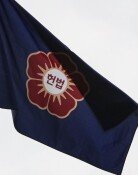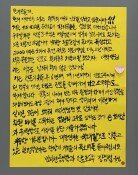S. Korean Air Force joins U.S. space training for the first time
S. Korean Air Force joins U.S. space training for the first time
Posted February. 08, 2017 07:04,
Updated February. 08, 2017 07:17

U.S. Strategic Command is an element of the U.S. Forces responsible for missions to sustain expanded deterrence in South Korea in emergency situations such as operation of nuclear bombers or use of intercontinental ballistic missiles. In addition, U.S. Strategic Command has also been engaged in strategic activities of monitoring unexpected accidents in space such as a fall of malfunctioning satellite or a clash between orbital satellite and unidentified objects. The SSA training will include programs to upgrades skills for monitoring risk or accident in space and development of resolution in such emergency cases.
“The South Korean Air Force had discussion with a senior leader of U.S. Strategic Command visiting Korea about air defense in the Korean sky and stronger cooperation for upcoming space missions,” said sources at the South Korean Air Force. “Accordingly, both parties have agreed that the South Korean Air Force will send its liaison officer to U.S. Strategic Command in the first half of 2017 and South Korean soldiers will join U.S. Strategic Command’s training on SSA scheduled in the latter half of 2017.”
Agents at the Space Operations Center of the South Korean Air Force will participate in U.S. Strategic Command’s SSA training in 2017. The Space Operation Center was launched in 2015, and its tasks include analysis of real-time space information given by U.S. Strategic Command and provision of information to local agencies. Also, the center helped U.S. Strategic Command for its analysis of tracking data of the fallen Russian military satellite at the end of 2015 and the payload carried by North Korea’s long-range missile in February 2016.
In the meantime, during his recent visit to the Anderson Air Force base in Guam, Gen. Terrence J. O'Shaughnessy, command of U.S. Pacific Air Forces, met an artillery unit responsible for Terminal High Altitude Area Defense (THAAD) and told soldiers that “THHAD defense for the Air Base in Guam is the cornerstone of guaranteeing air supremacy in the Asia Pacific region and air support to U.S. allies in emergency.”
Sang-Ho Yun ysh1005@donga.com
Headline News
- Med professors announce intention to leave hospitals starting Thursday
- Bridge honoring Sgt. Moon Jae-sik unveiled in Pennsylvania
- Chief of Staff Chung tells presidential secretaries to stay away from politics
- US FTC bans noncompete agreements
- N. Korea launches cyberattacks on S. Korea's defense companies







